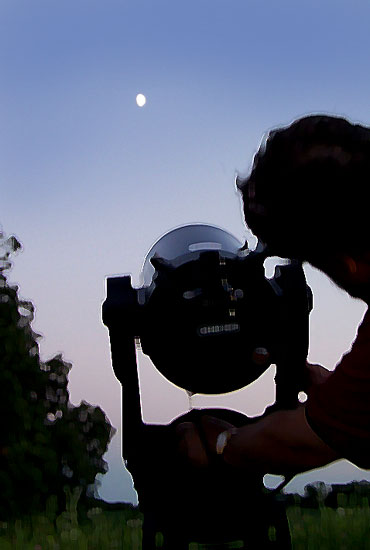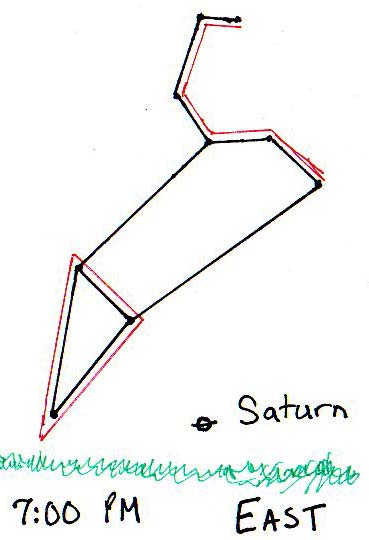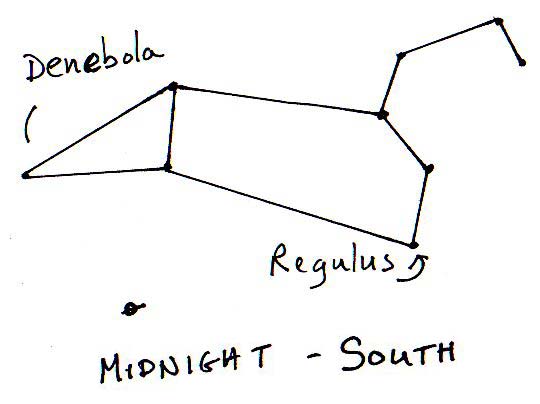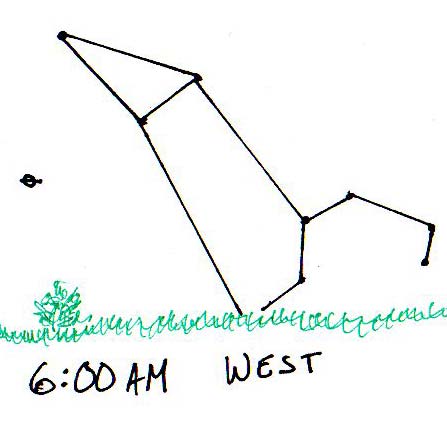
Venus has been predominant in the evening for several months now, but its dominance is drawing to a close. It will be moving lower in the night sky as it nears inferior conjunction on the March 25, where it is passes the imaginary line between the Earth and the sun.
It will also appear larger, and the crescent will become narrower. During the first two-thirds of the month, the slender crescent should even be visible in steadily handheld or mounted binoculars. Be very careful if you look at Venus through binoculars or a telescope late in the month, so that you don't look directly at the sun.
Because Venus is not directly between Earth and the sun during this conjunction, it will continue to be visible as it changes from being an evening object to a morning object. In fact, it is far enough away from the Sun that, for a few days at the end of the month, between the 20th and 25th, it is visible in both the evening and the morning to Northern Hemisphere observers. Southern Hemisphere observers are not so lucky, though. For them, Venus will not be visible at all for a week and a half during the conjunction. .

While Venus is at conjunction, or between Earth and the sun, Saturn reaches opposition on March 8. Opposition means the planet and the sun are on opposite sides of Earth from each other. When this happens, the planet is in the sky all night, just as the sun is visible all day on the other side of Earth. .
Saturn will be easy to find because of its proximity to the constellation Leo, the Lion. Just as Orion is the predominate constellation in the winter sky, regal Leo rules in spring. .

Leo is easy to find because of two bright stars and two distinct shapes. The head of Leo is on the right, and is shaped like a backwards question mark or a sickle. It is easy to imagine it as the mane of a proud lion. The star at the bottom of the question mark is Regulus, the brightest star in Leo. Regulus is sometimes called "the heart of the lion". One theory holds that a conjunction of Regulus and Jupiter was the star seen by the Magi that heralded the birth of Christ. .
The left side of Leo, the hindquarters, is a triangle, with Denebola at the far tip. Denebola, logically enough, means "tail". Together, the two parts resemble a reclining sphinx. Saturn will be below the tail triangle.

Visit Backyard Astronomy again in two weeks to learn more about the ringed planet,
**********Cool Thing of the Week: Bad Astronomy
Bad Astronomy sets out to correct the misconceptions about astronomy and science. From science fiction movies to news items, author Phil Plait will set you straight on what really happened and what couldn't possibly happen. The information is clear enough for laypersons to understand, but with enough details to satisfy science geeks.
**********Backyard Astronomy updates are available on Twitter!
BackyardAstro

The Piker Press moderates all comments.
Click here for the commenting policy.